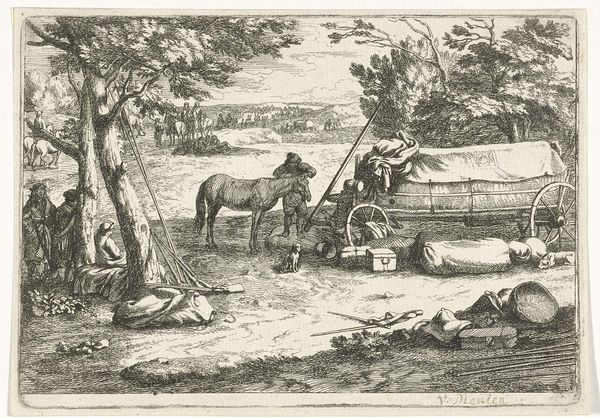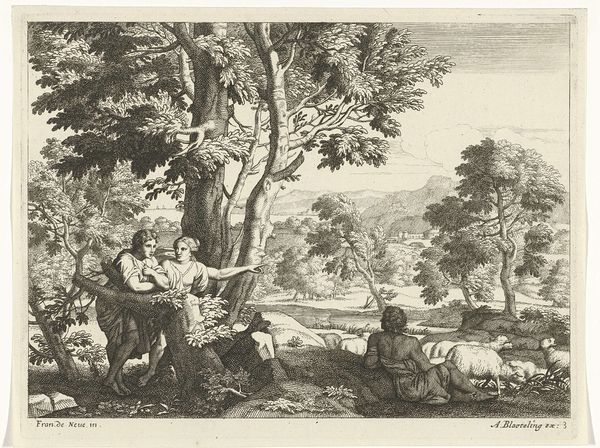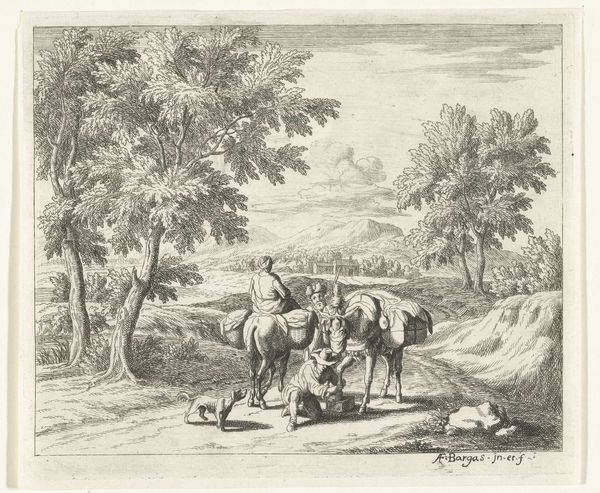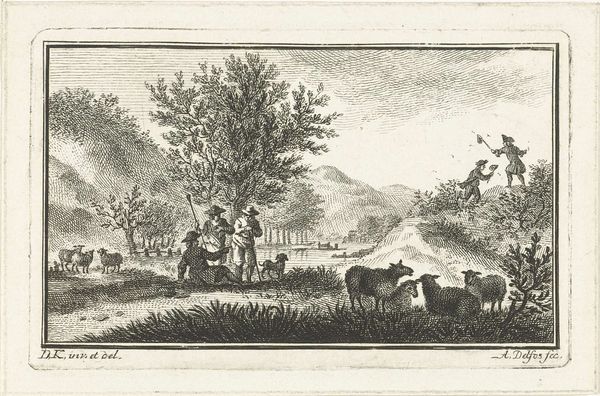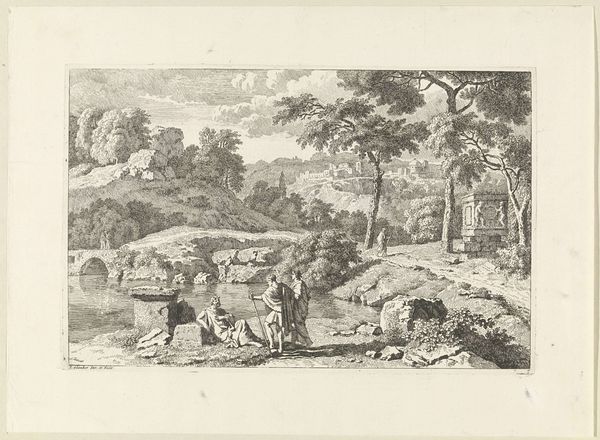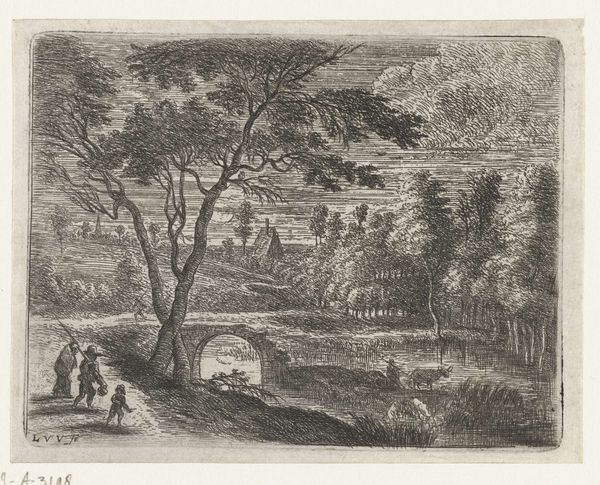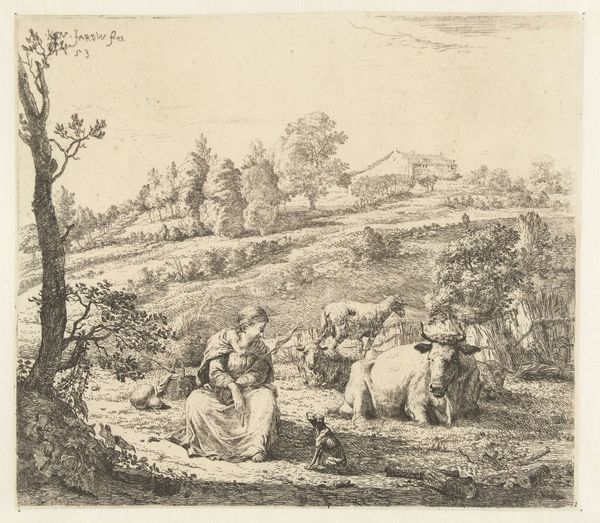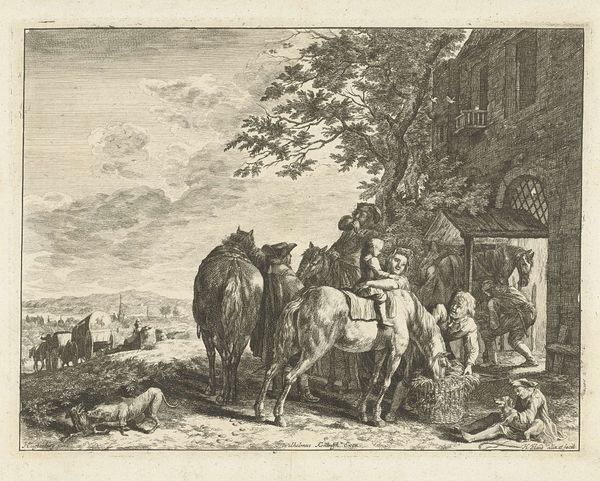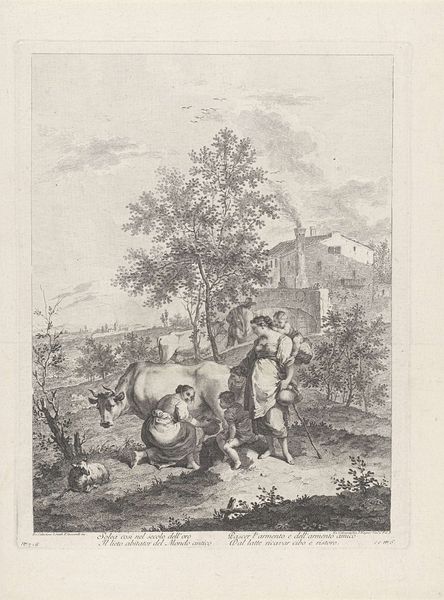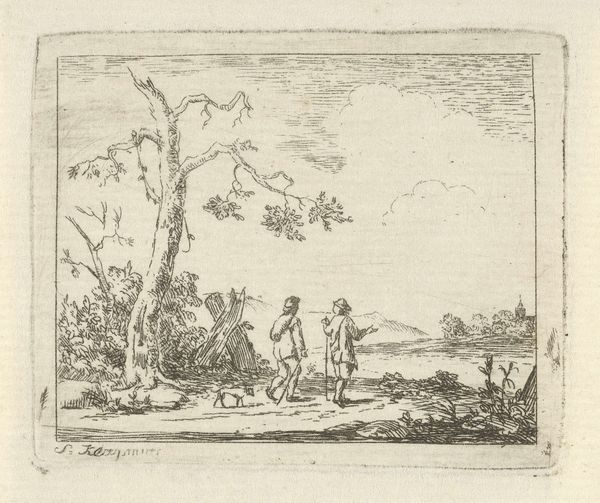
print, etching
#
narrative-art
#
baroque
#
pen drawing
# print
#
etching
#
war
#
landscape
#
history-painting
Dimensions: height 119 mm, width 163 mm
Copyright: Rijks Museum: Open Domain
Curator: This is “Landscape with Cart and Figures,” an etching attributed to Jan van Huchtenburg, likely created between 1673 and 1709. It's part of the Rijksmuseum's collection. Editor: It strikes me as both restful and unsettling. The foreground seems still, almost posed, but in the distance, figures gather near what looks like a small town—ominous given the strewn equipment and war imagery. Curator: Indeed. Huchtenburg often depicted military scenes, reflecting the tumultuous times of the late 17th century. The Dutch Republic was frequently at war, and images like this served to both document and, perhaps, subtly comment on the conflict's impact on the landscape and its people. It invites a critique of war as spectacle. Editor: From a purely compositional standpoint, I’m fascinated by the textures achieved through etching. Notice the way the artist uses varied line weights and hatching to simulate the rough texture of the canvas covering the wagon and the foliage of the trees, as well as, say, the soldiers’ outfits. There is a tactile quality, despite the graphic nature of the print. Curator: Consider, too, the class implications. We see not grand battles, but the weary aftermath—the labor of movement, the suggestion of looting, the displacement. The landscape isn't a romantic backdrop, but a site of hardship and maybe even resistance. Editor: The symbolism embedded in such details creates depth. The arrangement almost resembles a classical frieze— a story, or maybe a sequence of scenes, unfolding across the image. Is there some religious allegory intended, do you think? Curator: Perhaps, but I lean toward reading it as a social commentary on war's disruption of ordinary life. The intimate scene of rest underscores the vast scope of war happening concurrently in the distance. The pen drawing medium might signify accessibility of war experiences to more people than previously possible, as the availability of artworks and information widens to people of diverse social and educational backgrounds. Editor: I find it captivating how the artist creates such visual richness from very spare elements, emphasizing line, texture, and tone. Curator: Agreed. Considering the work through the lens of modern humanitarian crises only amplifies the sense of collective displacement it evokes. Editor: An unexpected resonance, discovered through our dialogue.
Comments
No comments
Be the first to comment and join the conversation on the ultimate creative platform.
